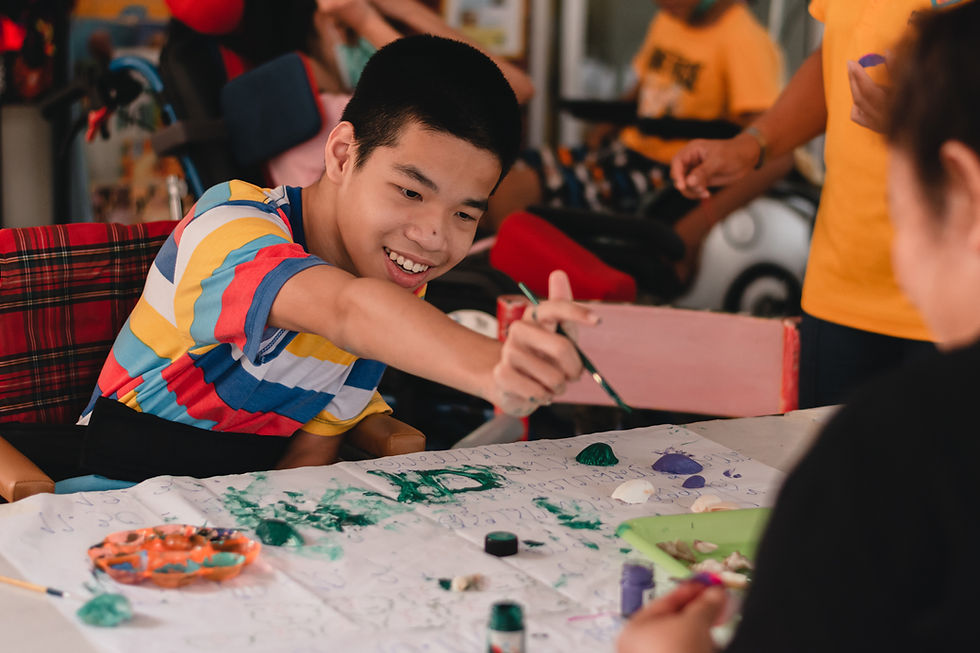What Makes a Good Therapy Session? (And Why It Matters)
- Rachel Medlock
- 2 days ago
- 3 min read
Not every therapy session, whether occupational therapy, speech therapy, behavioural therapy, or more, needs to look the same. In fact, it shouldn’t because no two children move through the world in the same way.
When we’re talking about neuroaffirming practice and what makes a good therapy session, some powerful signs support your child in ways that really matter — not just developmentally but emotionally, socially, and relationally.
Neuroaffirming practice centres respect, curiosity, and dignity. It moves away from “fixing” or forcing compliance, and toward connection, communication and confidence. When children feel safe and seen, they learn, and when parents and caregivers are included in the process, we create support that lasts long after the session ends.
So, what does that actually look like? Let’s break it down.
The child leaves feeling good — about the activity and about themselves
We’re not just looking for progress. We’re looking for pride. A child should walk away from their session feeling capable, respected and valued — not like they’ve been tested, redirected or exhausted. Therapy should feel like something they get to do, not something they have to get through.
The child’s interests and preferences are included
Neuroaffirming practice is built on strengths, not struggles. That means integrating a child’s passions, sensory preferences and regulation needs, because motivation and buy-in don’t happen without genuine interest. If they love trains, bring on the train-themed fine motor tasks. If they need movement, build it in.

Safety, curiosity and co-regulation come before performance
So much of therapy success is built on trust. An attuned therapist will prioritise connection over correction — slowing things down when a child is dysregulated, following their lead, and working with the child’s nervous system, not against it. Progress that comes from pressure rarely sticks, but the progress that comes from felt safety? That’s the kind that lasts.
The parent or caregiver feels seen, included and supported
Parents shouldn't just be the ride home; they should be part of the process. Good therapists will explain what’s happening, loop you in without judgement, and give you strategies that actually work in real life (not just in the clinic room). When parents feel empowered, everyone benefits.
There’s movement and play that supports the body and sensory system
Therapy sessions aren't just about skills but the systems underneath. We want to see obstacle courses, messy play, climbing, crashing, spinning, stretching… whatever your child’s body needs to regulate and integrate. Play isn’t a reward — it’s the work.

The therapist is attuned and connected, not just delivering
You can spot the difference in a heartbeat: the therapist who sees your child as a checklist and the one who sees them as a whole person. A good therapy session doesn’t just meet goals; it meets your child. It feels human. It feels relational, and that’s when the magic happens.
More Green Flags For What Makes A Good Therapy Session
We created our Green Flags Guide for families like ours — the ones who were thrown into therapy, reports, funding plans and specialist appointments without a map and just wanted to know: “What should this actually look and feel like?”
Our free downloadable guide includes:
✔️ Real-life examples of what to look for in a neuroaffirming support professional
✔️ Insights from families across Australia
✔️ Practical language to help you advocate with confidence
If you’ve ever walked out of a session wondering, "Was that helpful?" "Did that feel right? ", this guide is for you.

.png)



Comments